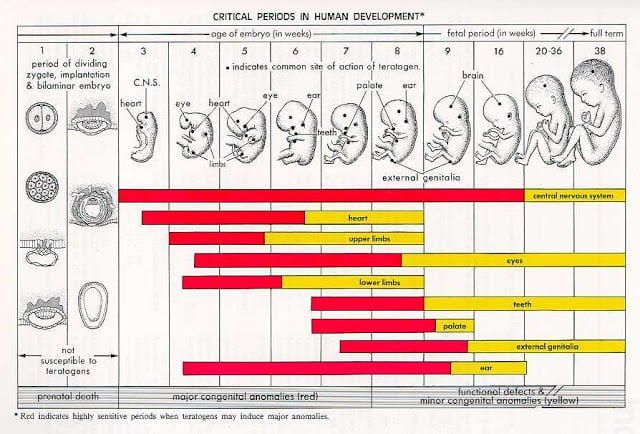- The human body, like that of most animals, develops from a single cell produced by the union of a male and a female gamete (or sex cell).
- Cell division, cell migration, programmed cell death (apoptosis), differentiation, growth, and cell rearrangement transform the fertilized oocyte, a highly specialized, totipotent cell, a zygote, into a multicellular human being.
- It is customary to divide human development into prenatal (before birth) and postnatal (after birth) periods.
- Most changes occur during the prenatal period; however, important changes also occur during later periods of development:
- neonatal period (first 4 weeks)
- infancy (first year)
- childhood (2 years to puberty)
- adolescence (11 to 19 years).
- Development does not stop at birth; other changes, in addition to growth, occur after birth (e.g., development of teeth and female breasts).

Image Source: futurefouredu.blogspot.com
Interesting Science Videos
The Prenatal Developmental Period
- Prenatal development (from Latin natalis, meaning ‘relating to birth’) includes the development of the embryo and of the fetus during a viviparous animal’s gestation.
- In human pregnancy, prenatal development is also called antenatal development.
- Prenatal development is highly influenced by the inheritance, expression, and regulation of genes.
- The development of a human from fertilization of an oocyte to birth is divided into two main periods:
(a) Embryonic period and
(b) Fetal period.
The Embryonic Period
- The embryonic period extends from fertilization to the end of eight weeks and the developing organism is called an embryo.
- The embryonic period is further divided into two parts:
(a) pre-embryonic period (germinal stage) and
(b) embryonic period proper.
Pre-embryonic period:
It extends from conception (fertilization) to the end of the second week of intrauterine life (IUL).
The morphogenic events during this period include:
- fertilization
- transportation of zygote through the uterine tube
- mitotic divisions/cleavage
- implantation, and
- formation of primordial embryonic tissues.
Embryonic proper period:
- It extends from the beginning of the third week to the end of the eighth week of intrauterine life.
- It is also called the period of organogenesis.
The morphogenic events during this period include:
- differentiation of the germ layers into specific body organs
- formation of the placenta, umbilical cord, and extraembryonic membranes.
The Fetal Period
- The fetal period extends from the beginning of the ninth week (third month) until the birth
- During this period, there is tremendous growth and specialization of the body structures.
- It is characterized by the maturation of tissues and organs and the rapid growth of the body.
- Growth in length is particularly striking during the third, fourth, and fifth months, while an increase in weight is most striking during the last 2 months of gestation.
The prenatal period ends with parturition and is followed by a long postnatal period. Only at about age 25 years are the last progressive changes completed.
References
- Schoenwolf, G.C., Bleyl, S.B., Brauer, P.R., Francis-West, P.H. & Philippa H. (2015). Larsen’s human embryology (5th ed.). New York; Edinburgh: Churchill Livingstone.
- Sadler, T. W., & Langman, J. (2004). Langman’s medical embryology. Philadelphia, Pa: Lippincott Williams & Wilkins.
- Moore, K. L., Persaud, T. V. N., & Torchia, M. G. (2008). The developing human: Clinically oriented embryology. Philadelphia, PA: Saunders/Elsevier.
- Gilbert, S. F. (2000). Developmental biology. Sunderland, Mass: Sinauer Associates.
